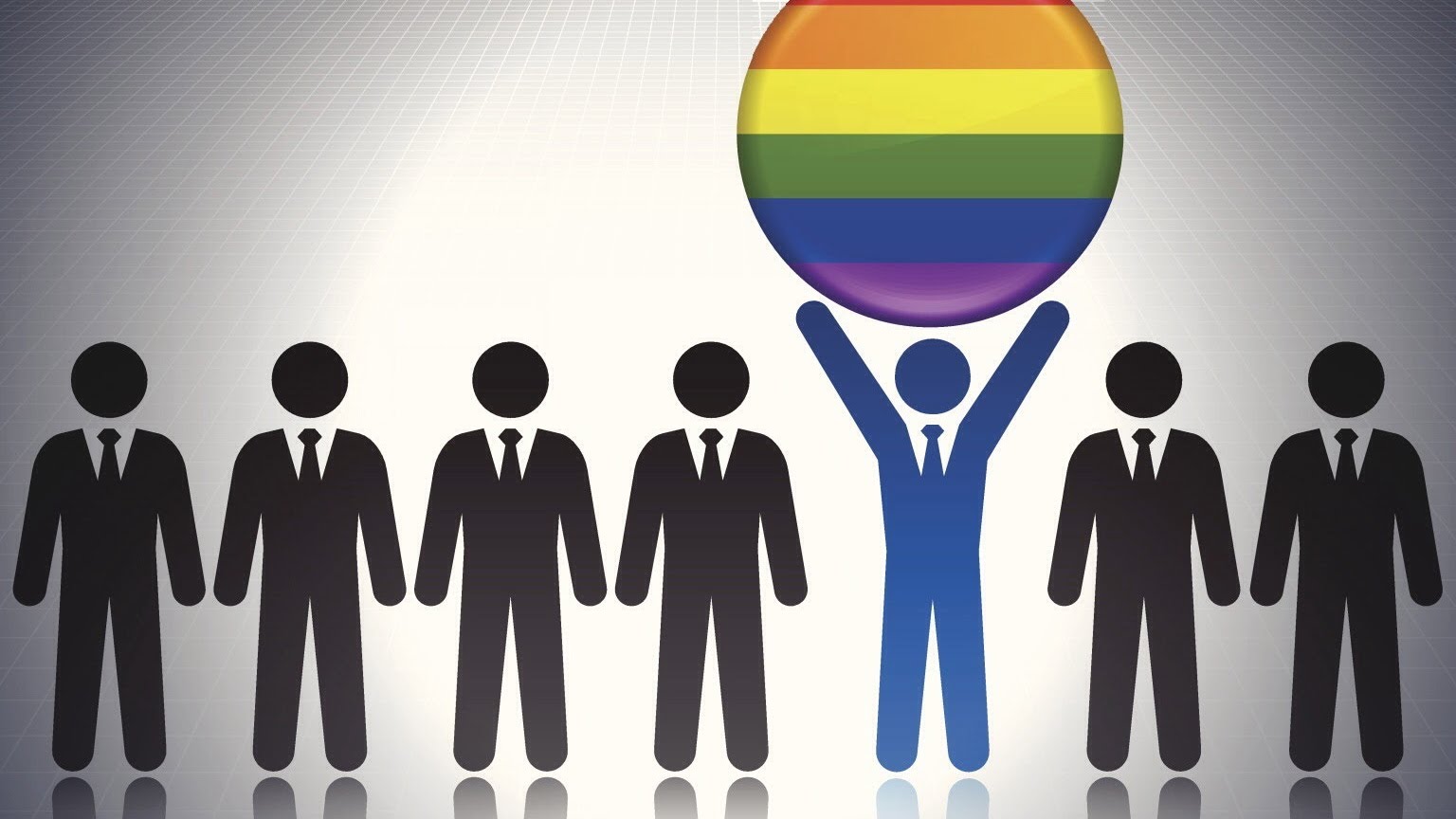HOW COMPANIES MAKE IT HARDER FOR LESBIAN, GAY AND BISEXUAL EMPLOYEE TO ACHIRVE THE WORK-LIFE BALANCE
Companies have been paying closer attention to work-family conflict and work-life balance over the last several decades. In many successful organizations, there is a heavy investment in offering programs that give employees more job-related flexibility, time for personal activities, and convenience. By promoting a positive work-family culture, employers are able to maintain a happier, healthier, and more committed workforce, which contributes to the bottom line.
But are companies missing something when it comes to addressing issues of work and family? Our research says that they are, and it could be a big problem from a diversity and inclusion perspective.
Recently, we conducted a qualitative study in which we interviewed 53 lesbian, gay, or bisexual (LGB) employees in the U.S. across various industries and job types. Specifically, we asked about their work-family experiences at their current organizations. Our study was motivated by the observation that, since its inception more than 30 years ago, research on work-family conflict in organizations has assumed that employees belong to a heterosexual family structure (one man and one woman). Our goal was to determine whether previous research on employees’ experiences of work-family conflict applied similarly to LGB employees and their families.
We found that, although LGB employees experience many of the same work-family conflicts that their heterosexual colleagues do — for example, work time interfering with family time, or feeling unable to separate from work at home — they experience a range of additional conflicts related to their stigmatized family identity. These include a sense of tension over whether to take advantage of family-related benefits for fear of revealing their same-sex relationship, feeling conflicted over whether to bring spouses to work events, and feeling uneasy about discussing with a supervisor the family-related challenges that impact their work life.
We also wanted to know what was causing these unique experiences of work-family conflict, and how employees in our sample coped with them. In particular, we learned that when work environments signaled to employees that their family “type” was less accepted, compared with more traditional families, they were more likely to experience stigma-based work-family conflict. Participants reported that the lack an explicit invitation for “partners” instead of “spouses” to family-related work events, or the absence of a comprehensive benefits package for same-sex partners, often led to perceptions that their family was unwelcome or less accepted in their workplace. Similarly, hearing coworkers discuss issues of “family” in a very traditional way, without considering that families might not all take the same form, led participants to report a sense of uneasiness over how receptive their coworkers and supervisors would be to their specific work-family challenges.
But are companies missing something when it comes to addressing issues of work and family? Our research says that they are, and it could be a big problem from a diversity and inclusion perspective.
Recently, we conducted a qualitative study in which we interviewed 53 lesbian, gay, or bisexual (LGB) employees in the U.S. across various industries and job types. Specifically, we asked about their work-family experiences at their current organizations. Our study was motivated by the observation that, since its inception more than 30 years ago, research on work-family conflict in organizations has assumed that employees belong to a heterosexual family structure (one man and one woman). Our goal was to determine whether previous research on employees’ experiences of work-family conflict applied similarly to LGB employees and their families.
We found that, although LGB employees experience many of the same work-family conflicts that their heterosexual colleagues do — for example, work time interfering with family time, or feeling unable to separate from work at home — they experience a range of additional conflicts related to their stigmatized family identity. These include a sense of tension over whether to take advantage of family-related benefits for fear of revealing their same-sex relationship, feeling conflicted over whether to bring spouses to work events, and feeling uneasy about discussing with a supervisor the family-related challenges that impact their work life.
We also wanted to know what was causing these unique experiences of work-family conflict, and how employees in our sample coped with them. In particular, we learned that when work environments signaled to employees that their family “type” was less accepted, compared with more traditional families, they were more likely to experience stigma-based work-family conflict. Participants reported that the lack an explicit invitation for “partners” instead of “spouses” to family-related work events, or the absence of a comprehensive benefits package for same-sex partners, often led to perceptions that their family was unwelcome or less accepted in their workplace. Similarly, hearing coworkers discuss issues of “family” in a very traditional way, without considering that families might not all take the same form, led participants to report a sense of uneasiness over how receptive their coworkers and supervisors would be to their specific work-family challenges.

“[Being in a same-sex couple] creates a lot of new work-family struggles,” one participant reported. “If we do [adopt a child], I am uncertain about talking with my supervisor about it. Like asking for an earlier schedule or some time off at the beginning of a placement or something like that. People are used to this when people get married and have a kid. Because we are a gay couple, I don’t see a lot of structure for that conversation.” In the same vein, another participant stated, “A couple of my colleagues have brought their spouses to events when we have an interesting speaker, but I totally hesitate to bring my wife with me. I think it would just be awkward not only for me and my wife, but for everyone else. My wife even asked me about it. She said, ‘I know it would just be incredibly awkward.’ I think that’s really sad, and maybe I should just say, ‘No holds barred, we are just going to do this.’ But the aftermath of doing that is something that I really have to consider because it’s a small place.”
Importantly, most of the people in our sample were out about their personal sexual orientation at work. In other words, their coworkers knew that they were lesbian, gay, or bisexual, but they still didn’t always feel confident that bringing their partner to events was a good idea. Many felt that having their family “on display” ran the risk of their coworkers thinking that they were trying to make a political statement or attempting to be too brazen about their sexual orientation in the workplace.
When these conflicts arose, our participants reported dealing with them in a myriad of ways. First, in contrast to their heterosexual colleagues who felt more able to freely mix their work and family lives when convenient, they felt forced to separate work and family to avoid the risk of sanction. As one participant reported, “I don’t really feel like there is a place for [my partner] in my work environment, that he could come visit me. I know everyone here really well and so I’m able to navigate the ‘sensitivities’ of the people here. I know there are a couple of [my coworkers] who would make it uncomfortable that he is gay…. If he randomly appeared here, he would have to reserve himself. That’s a terrible way of saying it. But I could imagine that being the case.”
Other individuals chose to suppress information about their family life at work, declining opportunities to discuss family vacations or weekend plans. In one case, a participant’s company encouraged employees to post pictures of their family in a collage at work, ostensibly to promote work-family friendliness. However, this individual struggled with what to do, stating, “I mean, a photo of my family would actually be considered almost aggressive, I think, on behalf of the institution. Because it would be me kind of trying to make an ‘activist point’ about the very narrow definition of family that was circulating around the whole event. I just felt like what they were asking for when they were using the word ‘family,’ they weren’t including me.”
Finally, employees also dealt with these conflicts by being careful about which family issues they talked about at work, and with whom. This meant that many had to evaluate who was “safe” and who was “questionable,” weighing the risks of opening up. One participant noted, “Where I work isn’t accepting of alternative lifestyles, so I don’t talk about family other than my children. I don’t talk about my partner except with a few people I trust.”
As you can imagine, all of this can be stressful for employees who feel that their family identities are stigmatized at work. In contrast to their heterosexual colleagues, LGB individuals often reported feeling alienated from their coworkers and lacking a sense of pride and dignity. Moreover, they also felt a sense of fragmentation between their work and family identities; they couldn’t truly connect with themselves at work or outside of work because of their need to suppress a core part of who they are for eight or more hours a day. Such situations also engendered in them a heightened need to remain vigilant at work, as they attempted to gauge who they could authentically discuss family-related information with.
Overall, our research uncovered an issue that is long overdue to be part of conversations about work and family: Employees with different types of families often face different challenges in managing the intersection between these two domains.

What does this mean for your organization? If you aren’t attempting to understand the work-family struggles of those in less traditional families, you could be unknowingly missing the mark for an ever-growing segment of your company’s workforce. This is true even if your company supports work-life initiatives more generally. Fortunately, there are things you can do about it.
Placing an explicit focus on inclusivity in all of your work-family initiatives can help make it clear to employees with less traditional families that they are welcome. This means ensuring that all assumptive language and imagery be removed in communications (for example, including pictures only of male and female partners in flyers promoting new work-family initiatives) and extending invitations to all significant others when announcing family-related work events. Further, educating your workforce on different types of families at work can promote more inclusive views of family and foster awareness around language that signals a narrow-mindedness about which families “count.” Examining family benefits packages may also reveal blind spots in your organization’s level of family inclusiveness.
Finally, try interviewing employees with different family types about what would make them feel more included. This can help identify ways to enrich the work lives of those with various family backgrounds and could also involve other kinds of families that may feel stigmatized at work — interracial couples or couples in which a partner or child is struggling with a mental health or addiction issue are just two examples.
Talking about the unique challenges faced by employees who experience family stigma at work may not be easy. But your company must address these issues head-on if you truly want to ensure a positive work-life culture for all employees. Ultimately, if you don’t know what kinds of families your workers belong to, you can’t understand the full scope of challenges they might face. If you aren’t aware of all of these challenges, your work-family solutions will always be lacking. One of our participants said it best when she stated, “I don’t think our organizations want to hurt us. They just don’t know that we’re here.”
SOURCE: HARVARD BUSINESS REVIEW
|
Training Program
INTERNATIONAL HUMAN RESOURCE MANAGEMENT/IHRM
Internationalize the human resource management capabilities of HR professionals in Vietnam Opening Date: March 14, 2019 in HCMC |










